What are Medicinal Mushrooms?
There are approximately 38,000 known species of mushrooms, at least 270 of which are known to possess therapeutic or medicinal properties. The use of medicinal mushrooms in the treatment of human illness dates back thousands of years; notably, Li Shizhen included numerous fungi as effective treatments in his 1578 Compendium of Materia Medica, regarded by many as the most comprehensive medical work ever completed in the history of traditional Chinese medicine. Within the past several decades, foresters, pharmacologists, ecologists, and researchers in both the Eastern and Western world have dedicated much clinical research to the effectiveness of medicinal mushrooms and their numerous immunological, antioxidant, anti-metastatic, cardioprotective, and obesity management properties.
List of Medicinal Mushrooms
Lions Mane Mushroom (Hericium erinaceus)
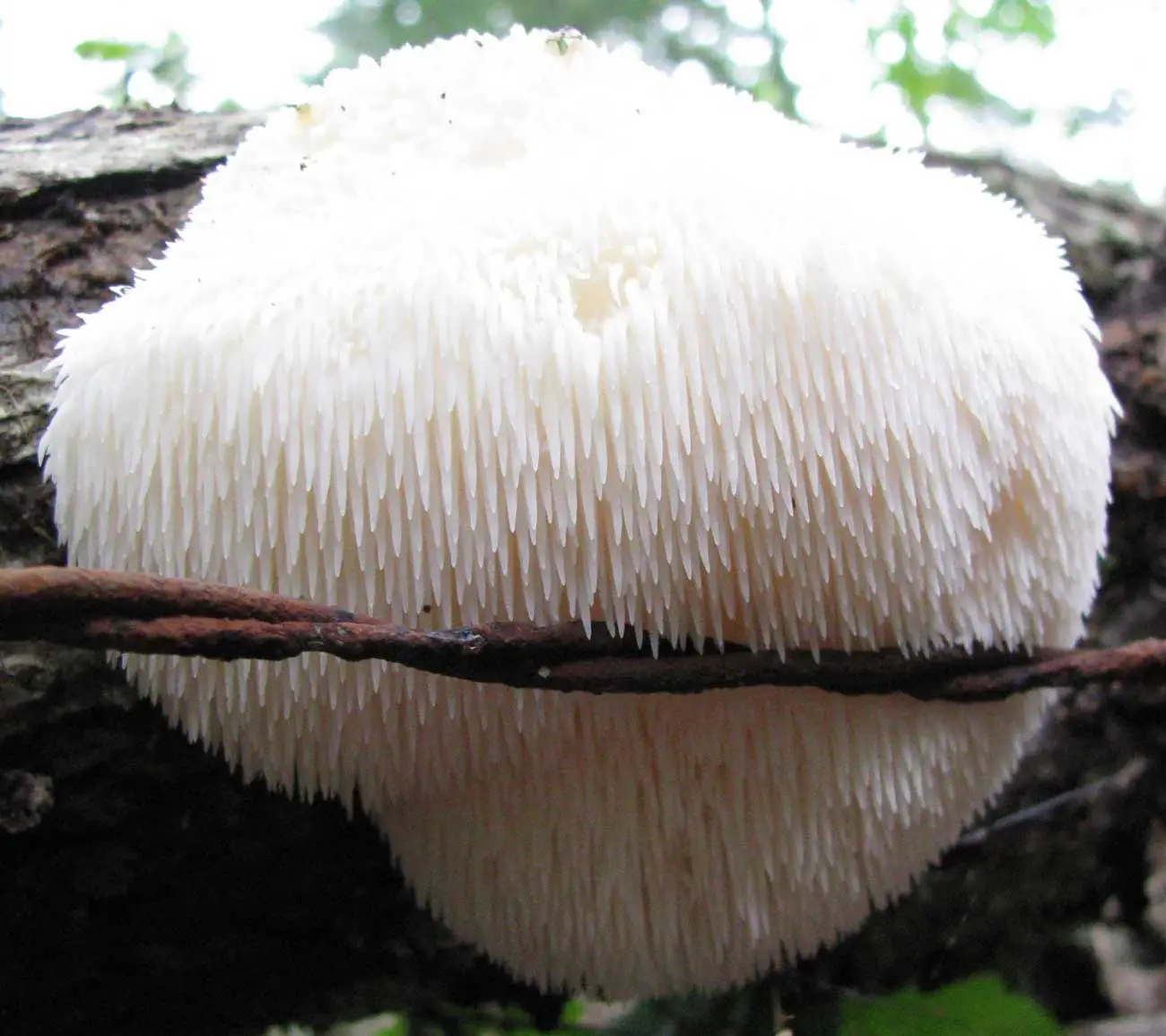
The Lion’s Mane mushroom, otherwise known as Hericium erinaceus, is an edible and medicinal fungus endemic to several parts of eastern Asia. The fungus is very easily identifiable by the long spines that grow from its fruiting body, earning it the nickname of “the hedgehog mushroom” or “the bearded tooth fungus.” Though a spiny mushroom may not sound appetizing, Lion’s Mane is well-known for its potent pharmacological activities. Its fruiting body, as well as its fungal mycelia, has anti-tumor, hypoglycemic, and possibly anti-aging properties. Further, some scientific evidence has indicated Lion’s Mane’s efficacy as a “brain food,” or an agent that enhances cognitive function, memory, and concentration.
Lions Mane Mushroom Benefits
Cognitive Improvement: In a double-blind, placebo-controlled trial conducted by researchers at the Hokuto Corporation in Shimokomazawa, Nagano, Japan, a group of older adults (approximately fifty to eighty years old) with mild cognitive impairments were administered Lion’s Mane mushrooms. Researchers found that the non-placebo group increased their cognitive function on the Hasegawa Dementia Scale (HDS-R) in comparison to the control group, depending on what time of day the mushroom was consumed. During the four-week follow-up to the trial, researchers found that cognitive function in the non-control group had declined significantly after ceasing the consumption of medicinal mushrooms. These data indicate that Lion’s Mane may be effective in alleviating mild cognitive dysfunction, but only when consumed on a consistent schedule. Lion’s Mane has also been demonstrated to be effective in improving cognitive function in healthy subjects. In a study conducted across various universities in Pavia and Caligari, Italy and Zurich, Switzerland, researchers examined the impact of H. erinaceus supplementation on brain function in healthy wild mice. They uncovered a significant improvement in recognition memory and an increase in excitatory synaptic current in fiber-CA3 synapse during the behavior test conducted after supplementation.
Anti-Cancer: The anti-cancer effects of Lion’s Mane have been validated by several clinical studies, though the mechanisms by which the mushroom is able to inhibit carcinoma growth is not well understood. Two studies performed by researchers at Kangwon National University in Chuncheon, South Korea have indicated that Lion’s Mane polysaccharides are able to enhance and sensitize doxorubicin-mediated apoptotic signaling (doxorubicin referring to a type of chemotherapy medication), thus aiding in the treatment of drug-resistant hepatocellular carcinoma growth.
Hypoglycemic: In a double-blind, placebo controlled study conducted at Tajen Institute of Technology in Ping Tung, Taiwan, researchers evaluated the effect of Lion’s Mane extract on blood glucose levels in diabetic rats. They found that the extract from H. erinaceus’s fruiting body significantly lowered elevation rates of blood glucose levels in treated rats. The treated group also demonstrated significantly lower levels of serum total cholesterol. Researchers concluded that extracts of Lion’s Mane not only have hypoglycemic effects, but may also reduce total cholesterol levels.
Turkey Tail Mushroom (Trametes versicolor)

The Turkey Tail mushroom, otherwise known by its binomial nomenclature Trametes versicolor, is a very common polypore fungus (meaning its fruiting body is porous on its underside). This type of mushroom can be found just about anywhere in the world where there are dying hardwood logs or stumps to decompose; therefore, it is a saprotroph, or a fungus that feeds on decaying matter. Its surface is notable for its arched rings of color, which can vary from cinnamon red to dusky green to dark brown. Turkey Tail is not a popular gourmet or culinary mushroom. However, its use in traditional medicine can be traced back as early as the Ming Dynasty (15th century) in China. Culturally, the Turkey Tail mushroom has been believed to facilitate spiritual “attunement and infinity,” as well as longevity and overall health. In terms of modern medicine, more research has been dedicated to Turkey Tail’s pharmacological properties than virtually any other mushroom, even the shiitake and reishi mushrooms. The polypore fungus has been demonstrated to be effective in the alleviation of negative symptoms associated with chemotherapy, as well as the regulation of cholesterol and overall immune health.
Turkey Tail Mushroom Benefits
Anti-Cancer: Within the past few decades, much attention has been dedicated to the function of polysaccharide and polysaccharide-protein complexes isolated from Trametes versicolor. The most compelling pharmacological activities of these complexes include their anti-cancer and immunological effects. In 2012, a clinical trial conducted at the University of Minnesota researched Turkey Tail’s impact on the immune responses of women who received standard chemotherapy and radiotherapy for breast cancer. Data indicated the following trends: 1) increased lymphocyte counts at 6-9 grams per day, 2) elevated natural cytotoxic lymphocyte activity at 6 grams per day, and 3) ian ncrease in CD8+ T cells and CD19+ B cells (types of white blood cells that kill and/or antagonize cancer cells). These data indicate that T. versicolor may have safe and effective anti-cancer and immunomodulatory capabilities at up to 9 grams per day.
HPV: In a randomized trial published by the International journal of Medicinal Mushrooms, researchers investigated the efficacy of Trametes versicolor (as well as Ganoderma lucidum, or reishi, and Laetiporus sulphureus, a species of bracket fungus) in the clearance of oral HPV (Human Papillomavirus serotypes 16 and 8). Results yielded an 88% clearance after two months of treatment in the groups supplemented with Trametes versicolor or Ganoderma lucidum. This was a preliminary clinical trial, so more research dedicated specifically to Trametes versicolor and its efficacy in HPV treatment is recommended. This preliminary research also indicates that T. versicolor may have further undiscovered antiviral properties.
Anticholesterolemic: A study published by the Journal of Medicinal Plants Research in 2011 evaluated the lipid-lowering effect of T. versicolor in laboratory rats fed a high cholesterol diet. Results yielded that the Turkey Tail mushroom extract stimulated a significant reduction in the coronary risk index and in the serum total cholesterol of the treated rats. The experiment was conducted over a period of fourteen days, and the researchers concluded that the consumption of Trametes versicolor may help reduce or prevent hypercholesterolemia.
Chaga Mushroom (Inonotus obliquus)

Chaga, or Inonotus obliquus, refers to a type of mushroom that grows parasitically on dead or decaying trees, particularly birch, alder, beech, poplar, and oak. The fruiting body of the chaga mushroom is rarely seen as it grows irregularly on its host tree. The spores of the chaga fungus spread through the heartwood of its tree, ultimately forming a thick, tar-black mycelium mass on the exterior of the tree that almost looks more like a burn than a mushroom. Since the fruiting body proliferates primarily on the interior of the tree’s bark, it is uncommon to see a chaga fungus in a fan shape like many other mushrooms. The chaga mushroom thrives in cold habitats, and can most often be found in the birch forests of the Northern United States and Canada, Eastern and Northern Europe, Russia, and Korea.
Mentions of the chaga mushroom in medicinal use can be traced back to the accounts of ancient Romans, who imported the fungus on the bark of birch trees from Northern Europe. It also has a long history of medicinal use for ailments of the stomach, kidneys, and lungs in Slavic cultures as far back as the 11th century. In present day, the mushroom has been the subject of several clinical studies in order to verify its anti-cancer, immunomodulatory, antiviral, anti-diabetic, and antioxidant properties.
Chaga Mushroom Benefits
Anti-Cancer: In a study published by Wonkwang University in Jeonbuk, South Korea, researchers investigated the anti-proliferative and apoptotic effects of Inonotus obliquus on human hepatoma cell lines (specifically HepG2 and Hep3B cell lines). Utilizing the Western blot technique, the scientists screened the cytotoxicity of a chaga mushroom water extract, and found that HepG2 cells were more sensitive to the product. In fact, the water extract both inhibited hepatoma cell growth and induced apoptotic cell death. These data indicate the potential of the chaga mushroom as an adjuvant cancer treatment, particularly in relationship to cancer of the liver.
Diabetes: In a study published by the Korean Society of Life Science, researchers examined the effects of fermented chaga mushroom on glucose, insulin, and lipid peroxidation levels in diabetic rats. Rats were administered a diet of 50 g/kg mushroom powder and fermented chaga mushroom powder (versus a the control group) for three weeks. Data indicated that lipid peroxidation was significantly lowered in the fermented chaga group, and that hepatic glutathione concentrations (which are closely related to antioxidant systems) were significantly higher. However, the non-fermented chaga group demonstrated only moderate antioxidant activity in the supplemented diabetic rats. These results may indicate that fermented chaga exerts hypoglycemic and antioxidative effects in type 1 diabetes.
Antioxidant: A study published by the Journal of Ethnopharmacology investigated the antioxidant activities of the chaga mushroom via four different extract types. Results indicated that the polyphenolic extract, as well as the extract containing steroids and triterpenoids, yielded significant antioxidant effects against hydrogen peroxide-induced oxidative stress in a human keratinocyte cell line. However, the polysaccharide extract was ineffective in that cell line. Researchers concluded that polyphenolic chaga extracts have the ability to protect cells against oxidative stress at concentrations higher than 5 μg/ml.
Reishi Mushroom (Ganoderma lucidum)
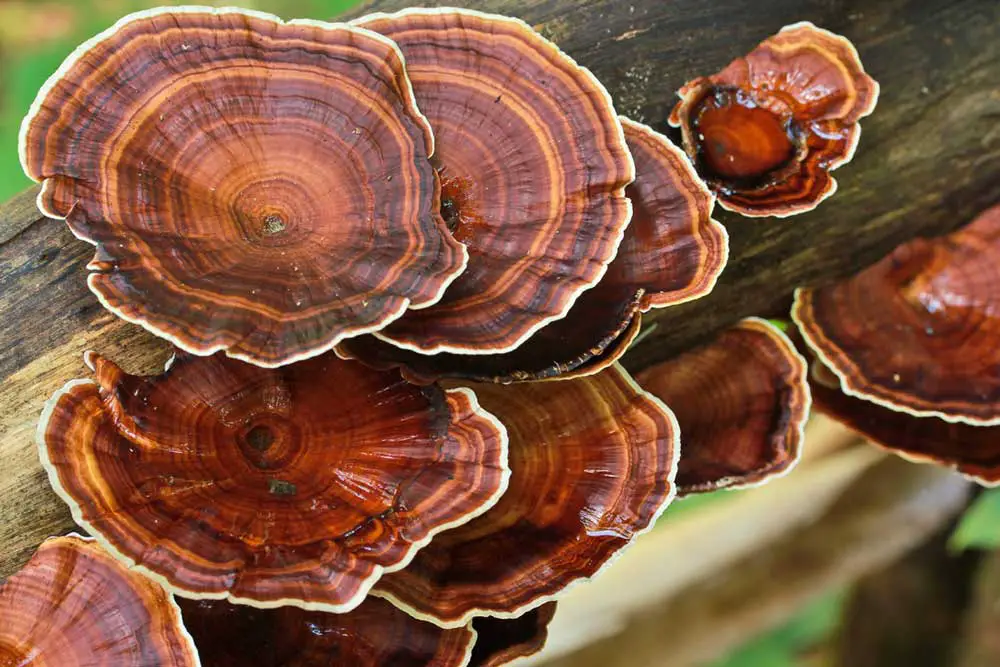
Reishi, also known commonly by its Chinese title lingzhī or its scientific classification Ganoderma lucidum, refers to a type of saprotrophic mushroom found throughout Asia, Australia, South America, Southern Europe, and parts of Southeastern North America. It typically grows on decaying or dying trees and is identifiable by its sleek, reddish-brown surface and rough, woody texture. Because the fungus is so tough, it is inedible in its naturally occurring form and can instead be ingested in the form of a powder, in capsules, tea extracts, broth, and dried mushroom slices. The reishi mushroom has a long and storied history of medicinal use throughout China, Japan, Korea, and many other East and Southeast Asian countries. The earliest mention of reishi in historical literature goes as far back as the third century in Ch’in Dynasty China, when it was commonly believed to promote longevity and was reserved for members of the monarchy alone. Alongside the Turkey Tail mushroom and the shiitake mushroom, reishi is one of the most well-researched medicinal mushrooms in contemporary science.
Reishi Mushroom Benefits
Anti-Cancer: The reishi mushroom has been tested as a possible adjuvant treatment in various types of cancers. A 2013 study tested Ganoderma lucidum as a potential therapeutic for Inflammatory breast cancer. Resulting data indicated that reishi has the capacity to suppress protein synthesis and tumor development in breast cancer, pointing to it as a possible cancer therapeutic. Further research published by the Journal of Nutrition and Cancer has validated this hypothesis. In the aforementioned study, researchers found that reishi extract directly inhibited the proliferation of metastatic cancer cells without destroying noncancerous mammary epithelial cells. These data further support the case for reishi as a non-harmful adjuvant treatment in breast and potentially other types of cancers.
Cholesterol: Recent research has pointed to Ganoderma lucidum as a potential weight and cholesterol management agent. In a Northwest European study conducted across various French, German, and Swiss universities, researchers found that reishi extract significantly reduced TV, LDL, and HDL cholesterol levels in hamsters and Göttingen minipigs.
Weight Loss: Evidence indicates that Ganoderma lucidum may have both weight management and anti-diabetic capabilities. A 2014 clinical study published by Nature Communications found that a water extract from reishi mycelium was able to reduce body weight, inflammation, and insulin resistance in overweight mice fed a high-fat diet. Follow-up research indicated that high molecular weight polysaccharides isolated from reishi produced microbiota-modulating effects, meaning the fungus may be able to aid in weight management by regulating gut bacteria.
Neuroprotective: In a study conducted at Peking University in 2004, researchers discovered that a water-soluble extract from the reishi mushroom reduced oxidative stress in rats with ischemic brain damage. Oxidative stress damage contributes directly to several neurodegenerative disorders, such as Alzheimer’s disease, Parkinson’s disease, Hunginton’s disease, and amyotrophic lateral sclerosis. Further, data from a multi-university study published by Stem Cell Reports confirmed that a water extract from Ganoderma lucidum promoted neural progenitor cell (NPC) proliferation and alleviated cognitive deficits in mice with Alzheimer’s disease.
Cordyceps Mushroom

Cordyceps refers to a genus of approximately 400 ascomycete species-type fungi, most of which attach parasitically to various insects, arthropods, and (rarely) on other fungi. The majority of cordyceps fungi thrives in humid, tropical climates and can most often be found in the high altitude regions of Nepal, Tibet, Japan, Korea, Vietnam, and China. In fact, cordyceps are sometimes colloquially known as “the caterpillar fungus” or “the caterpillar mushroom,” as they are known to emerge from the bodies of caterpillars after their spores infect the insects’ bodies. In a truly unusual parasitic life cycle, these fungi consume more than 90% of the insects from which they grow and effectively mummify them into what looks a bit like a thick band of orange coral. Despite their strange growth cycle, cordyceps have been utilized in traditional Chinese and Tibetan medicine since the 15th century at least. It is believed that they facilitate higher energy and endurance levels, increase libido, support the immune system, and combat fatigue. Some evidence also points to cordyceps as effective in the treatment of bronchitis and other respiratory disorders, kidney and liver disorders, high cholesterol, rheumatism, and arthritis. Cordyceps may also possess anti-tumor capabilities.
Cordyceps Mushroom Benefits
Anti-Cancer: In a cell culture study conducted by The Hong Kong Polytechnic University, researchers examined the effect of a Cordyceps sinensis fungal mycelium extract on four different cancer cell lines: MCF-7 breast cancer, B16 mouse melanoma, HL-60 human premyelocytic leukemia, and HepG2 human hepatocellular carcinoma. Results indicated that the ethyl acetate mycelium extract had a potent effect against all four cancer cell lines. In particular, the cordyceps extract yielded a significant inhibiting effect on B16-induced melanoma, causing a 60% decrease in tumor mass over the course of 27 days. Other clinical trials have pointed towards cordyceps’ possible effectiveness as an adjuvant treatment in human breast cancer, small cell lung cancer, and colon cancer.
Renoprotective: In a study published by the Journal of Zhejiang University, researchers examined the efficacy of Cordyceps cicadae (as opposed to growing on caterpillars, this type of cordyceps forms on the bodies of cicada bugs) in treating kidney disease. Results indicated that Cordyceps cicadae was able to inhibit renal fibrosis, a harmful process which leads to kidney failure in virtually every type of chronic renal disease. Cordyceps sinensis has also demonstrated therapeutic potential in the treatment of kidney disease. In 2014, researchers at The Chinese University of Hong Kong found that cordyceps preparations significantly decreased serum creatinine levels (elevate creatinine signifies impaired kidney function) in individuals with chronic kidney disease.
Energy: At the 1993 Olympics, three female Chinese athletes broke five world records in track competitions. Though officials insisted on screening the athletes for anabolic steroids, they found that the only “performance boosters” utilized by these women were cordyceps. After these events, the mushrooms made national news as non-harmful stamina and energy boosters, and several clinical trials emerged assessing the anti-fatigue properties of various cordyceps species. For example, in a study published the Bangladesh Journal of Pharmacology, researchers found that a preparation of Cordyceps sinensis mycelium extended the exhaustive swimming time – as well as muscle glycogen levels – and decreased blood lactic acid levels in treated mice. A research study published by the Jouranl of Pharmaceutical Biology performed a very similar mouse model trial with Cordyceps guangdongensis and came to markedly similar results.
Maitake (Grifola frondosa, Hen of the Woods)
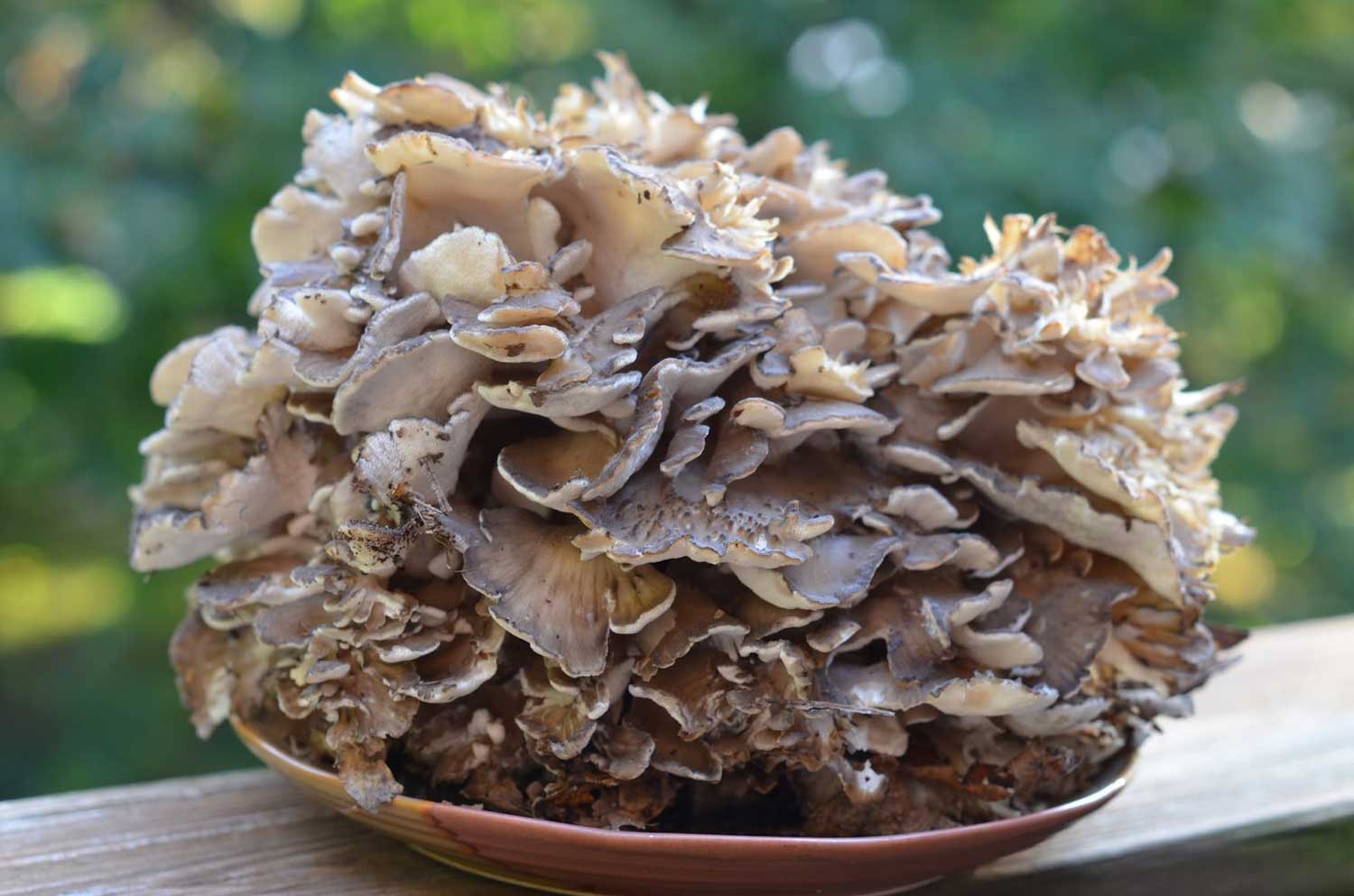
The maitake mushroom, or Grifola frondosa, is an edible polypore mushroom that commonly grows in clusters as the bases of trees, especially oaks, maples, and elms. It goes by many nicknames in the English language, including “hen of the woods,” “ram’s head,” and “sheep’s head,” and in Japanese its title literally translates to “dancing mushroom.” According to public folklore, this title emerged from eyewitness accounts of people dancing with elation upon finding the mushroom in the wild and uncovering its extraordinary healing capabilities. The fungus can be found most commonly in China, Japan, and northeastern North America, and is tied to improvement in overall immunity, as well as diabetes and cholesterol management, and possibly the suppression of tumor cells.
Maitake Mushroom Benefits
Anti-Cancer: Within the past few decades, researchers have been examining the efficacy of various types of medicinal mushrooms as adjuvant treatments for several cancers. In 2000, the maitake mushroom was the subject of an in vitro study investigating the potential antitumor effects of Grifola frondosa on prostatic cancer cells. The results were significant, as researchers observed almost total apoptosis (95%) of human prostate cancer PC-3 cells at 480 micrograms/mL. They also observed that the efficacy of the highly purified beta-glucan preparation from the mushroom demonstrated very limited change in efficacy even when combined with other anticancer drugs. Those involved with the study strongly suggested further investigation into the exact antitumor mechanisms of Grifola frondosa.
Cholesterol: Researchers at Obihiro and Hokkaido Universities in Hokkaido, Japan observed the effects of maitake mushroom fibers on serum cholesterol and low-density lipoprotein receptor mRNA in rats fed a cholesterol-free diet. The results of the clinical trial yielded that a treatment of Grifola frondosa fiber powder lowered serum total cholesterol levels via enhanced fecal cholesterol excretion. Though this particular project addressed healthy mice, similar studies have also indicated that the maitake mushroom is effective in cholesterol management with non-healthy subjects. For example, a 1989 study published by the Journal of Nutritional Science and Vitaminology yielded that an eight-week feeding of maitake reduced blood pressure and plasma free cholesterol levels in spontaneously hypertensive rats. These and other data indicate that maitake has a consistent anticholesterolemic mechanism.
Diabetes: In a 2010 study published by the Journal of Pharmacy and Pharmacology, researchers evaluated the anti-diabetic effect of an extract from the fruiting body of the maitake mushroom on diabetic mice. Results yielded that treatment with an MT‐α‐glucan extract from the maitake mushroom significantly decreased overall body weight, fasting plasma glucose levels, serum insulin, cholesterol, and free fatty acid and MDA content in the diabetic mice’s livers. Researchers concluded that the maitake mushroom likely possesses an intrinsic anti-diabetic effect, the mechanism of which likely involves increasing the sensitivity of insulin receptors.
Shiitake Mushroom (Lentinula edodes)

The shiitake mushroom is one of the most commonly known edible fungi, beloved for its dense texture and rich, smoky flavor. Given that it is globally acknowledged by its Japanese name shiitake, which literally translates into “mushroom from the hardwood tree,” the fungus is typically associated with Japanese cuisine. However, the shiitake mushroom has been cultivated throughout the majority of East Asia for the past 2,000 years. Shiitake mushrooms grow particularly well on many deciduous trees, including poplar, beech, ironwood, beech, oak, northern maple, American hophornbeam, and Chinese chinquapin. Shiitake has been associated with numerous potential health benefits, and though it is more universally thought of as a culinary mushroom, in recent years its role as a medicinal fungus has come into focus. In particular, its immunoprotective capabilities, which are likely attributed to an immunity-related messaging molecule {titled interleukin-23 or IL-23} that shiitake is known to produce in the lower digestive tract, have been of great interest to researchers. Shiitake may also have the ability to improve the regulation of blood sugar levels and insulin secretion, inhibit the growth of various types of tumors, and possess cardioprotective properties.
Shiitake Mushroom Benefits
Immunoprotective: In addition to the beneficial immunomodulatory molecule IL-23, the shiitake mushroom possesses a (1-3)-beta glucan called lentinan, which can be extracted directly from its fruiting body. Clinical evidence has pointed to this polysaccharide as an effective immunostimulatory drug. In a study conducted by China Medical University and Shenyang Pharmaceutical University in Shenyang, China, along with the University of Massachusetts Medical School in Worcester, Massachusetts, researchers administered a treatment of lentinan to laboratory mice infected with Plasmodium yoelii, a type of malaria parasite, in order to observe its effects. They found that lentinan significantly decreased the parasitemia in treated mice by controlling parasitic proliferation in the blood. Lentinan has also been proven effective in managing the immune health of HIV-positive patients. In a study conducted at the San Francisco General Hospital, afflicted patients were administered a preparation of lentinan (vs. a placebo-controlled group) alongside the medication didanosine for eight weeks. Results confirmed a mean increase of protective CD4 cells in patients receiving a preparation of lentinan and didanosine, in contrast to a mean decrease in CD4 cells in patients receiving didanosine alone.
Weight Loss: The shiitake mushroom has shown to be beneficial in managing body weight and lowering plasma lipid levels. A study conducted by various universities across Australia and Indonesia examined the underlying mechanisms of the shiitake mushroom in managing plasma triacylglycerol by observing the effects of shiitake powder administered to laboratory rats. Results of the study indicated that high-dose shiitake mushroom is able to assist in the management of overall body weight (and possibly the prevention of obesity) by increasing plasma triacylglycerol accumulation in the liver, rather than adipose tissue, which manifests in fat.
Cardioprotective: In traditional Chinese medicine, the shiitake mushroom is said to be good for “heart troubles,” and some contemporary clinical evidence confirms this suspicion. For example, a study conducted at Tohoku University in Japan addressed the cardioprotective effects of shiitake and maitake mushrooms in spontaneously hypertensive rats. Results indicated that both maitake and shiitake were successful in modulating blood pressure and cholesterol levels. However, while the maitake mushroom preparation resulted in a decrease in VLDL cholesterol alone, shiitake proved to be effective in reducing both HDL and VLDL cholesterol.
Agaricus blazei
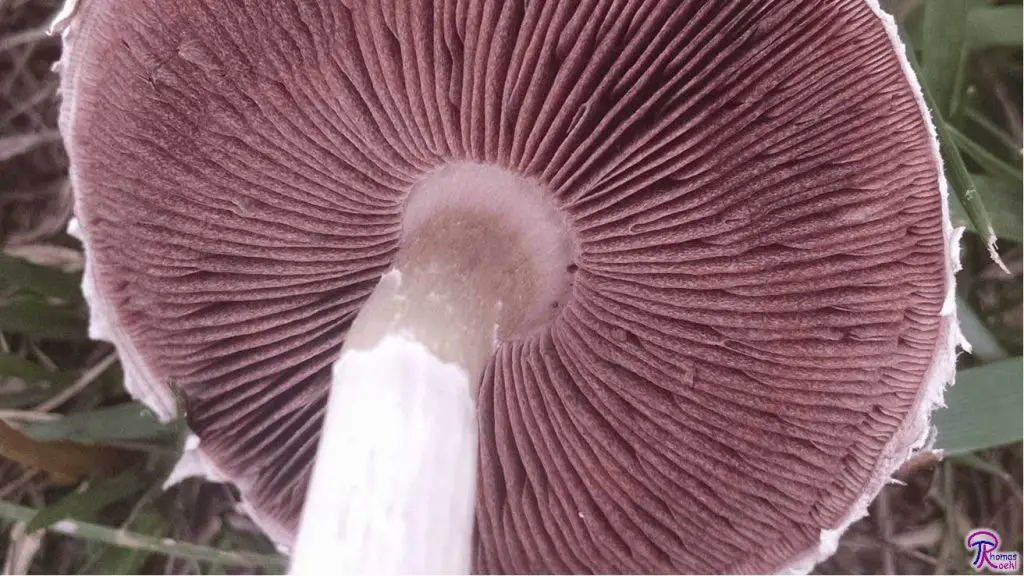
Agaricus blazei, commonly known as the “almond mushroom“ (for its almond-like fragrance), “mushroom of the sun,” or “royal sun agaricus,” is an edible and medicinal fungus particularly well-known for its immunological potency. Unlike many other medicinal fungi, Agaricus blazei appears to have originated in the West. In the late 19th and 20th centuries, it was primarily cultivated for culinary purposes out of the eastern United States, especially Florida. It was later identified in parts of Western Europe, the Philippines, Taiwan, Japan, California, and the Hawaiian islands. Agaricus blazei can be visually identified by its smooth, circular cap, which can come in a variety of colors including white, gray, auburn, and dark brown. The fungus gravitates towards rich soils and can grow singularly or in a cluster of mushrooms. While Agaricus blazei has a relatively recent historical record of medicinal use in comparison to its numerous East Asian counterparts, it has demonstrated the capacity to lower blood cholesterol (and possibly insulin), inhibit metastasis in lung cancer, hepatocarcnoma, stomach cancer, and colorectal, gynecological, and prostate cancers, and stimulate overall immune function.
Agaricus Blazei Benefits
Anti-cancer: In a 2001 study published by the Journal of Nutrition, researchers examined Agaricus blazei’s mechanism of action in relationship to its suspected anti-tumor properties. They observed that a lipid fraction extracted from the fruiting body of A. blazei significantly inhibited tumor growth in sarcoma 180-afflicted mice. Researchers also noted that the lipid fraction in combination with a chloroform/methanol mixture halted metastasis without unpleasant side effects. Another important finding emerging from this particular study was that A. blazei was found to contain agaritine and ergosterol, which were revealed to induce apoptosis in leukemic cells. Further, A. blazei is reported to have anti-tumor properties in laboratory mouse models of fibrosarcoma, myeloma, ovarian, lung, and prostate cancer, as well as in human studies of gynecological cancer and leukemia.
Anti-inflammatory: A 2009 study published by the Journal of Medicinal Food observed the effects of aqueous and alkaline extracts from Agaricus blazei on inflammatory processes induced by various different chemical compounds. Researchers found that the oral administration of A. blazei marginally inhibited nystatin-induced edema (nystatin being a potent anti-fungal medication). Further, when Freund’s adjuvant (a type of dried mycobacteria) was used to induce inflammation, A. blazei was able to inhibit inflammation even more effectively. Researchers concluded that A. blazei extracts may be useful in modulating inflammatory diseases based on the presence of β-glucan polysaccharides. Later in 2011, researchers at The Norwegian Radium Hospital observed a significant decrease in plasma levels of proinflammatory cytokines in Crohn’s disease and ulcerative colitis patients administered a preparation of A. blazei for twelve days. These and other similar research data yield promise for use of A. blazei against inflammation and possibly chronic autoimmune diseases.
Immunomodulatory: Agaricus blazei has been found to elicit both anti-infection and anti-tumor effects in mouse models and some human trials. At the Ulleval University Hospital in Oslo, Norway, researchers completed a series of clinical trials with different types of Agaricus blazei extracts and concluded that the fungus demonstrated immunoprotective activity against the side effects of chemotherapy in supplemented patients. Further, it was demonstrated that in vivo A. blazei extract stimulated the upregulation of genes involved in cell signaling, cycling, and transcriptional regulation (all of which are related to anticancer effects). However, researchers observed a significant amount of differentiation in chemical behavior between different types A. blazei extracts; they hypothesized this deviance was due to differences in manufacturing.
Poria (Wolfiporia extensa, Fú Ling)
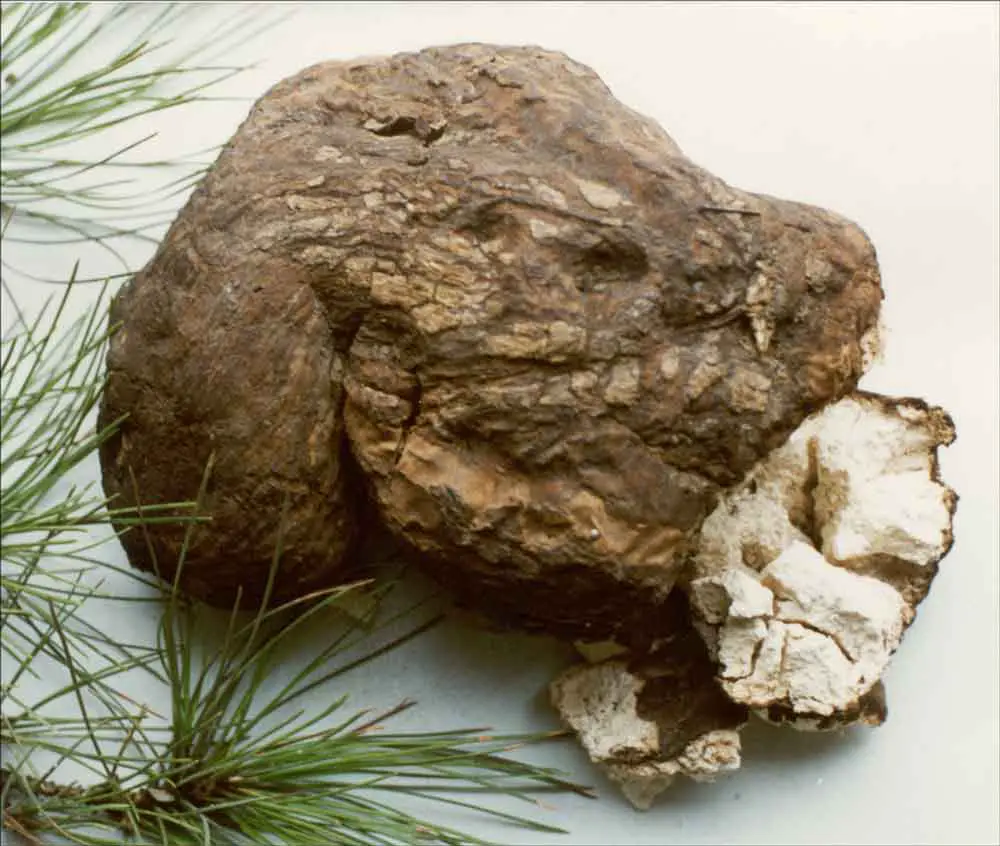
Poria, otherwise known by its binomial nomenclature Wolfiporia extensa or its Chinese title Fú Ling), is a type of fungal herb that has a storied history of medicinal use in Chinese medicine. It is primarily a wood-decay type fungus that decomposes brown, white, and soft rot in the bodies of dead or dying trees, but it also has the capacity for subterranean growth. Poria grows easily on pines, conifers, and several types of hardwood trees. It can be visually identified by its thick, rough outer cap, which typically has a slightly mottled brown exterior. Though it looks quite tough and almost bread-like on the outside, poria tends to have a soft texture and a mild, slightly sweet flavor. Further, its outer skin is medicinally known for being a reliable diuretic. The fruiting body of the poria mushroom is also suspected to regulate digestive function, support immunity, improve kidney and liver function, and yield anti-inflammation, anti-tumor, and antioxidant properties.
Poria Benefits
Antioxidant: In a study conducted by the University of Tsukuba in Tsukuba, Ibaraki, Japan, researchers explored the antioxidant activities of W. extensa polysaccharides by fermenting them in a soybean curd residue. They found that, under optimal conditions, poria polysaccharides exhibited productive antioxidant activities. Further in vitro studies, including a comparison of phytochemical compounds and antioxidant activitiy in W. extensa cultured from three different districts of South Korea, have confirmed these findings. These researchers in the latter study discovered that poria mushrooms cultivated from the Gangwon-do district had a particularly strong antioxidant activity in comparison to mushrooms cultivated from the Geyongsang-do and Jeolla-do districts. However, further clinical trials must be conducted in order to assess W. extensa’s exact antioxidant mechanisms in combating human ailments and disease, and against which illnesses the mushroom is most effective.
Anti-tumor: The poria mushroom has exhibited verifiable anti-tumor activities, and to date its mechanism of action is relatively well-understood. In a study conducted between Wuhan University and Huazhong University of Science and Technology in Wuhan, China, researchers isolated a (1→3)-β-d-Glucan from W. extensa in order to obtain and analyze a series of phosphorylated derivatives. Results yielded that, in vivo, poria beta-glucans exhibited fairly strong inhibition against S-180 tumor cells at low dosages. Other research has pointed towards polysaccharide fractions of Wolfiporia extensa as effective against human leukemic cells U937 and HL-60 cell lines.
Renoprotective: It is well-known that the surface layer of the poria mushroom has been used in traditional Chinese medicine to combat urinary issues and promote kidney health for the past 2,000 years. Recent clinical trials have further validated the fungus’s use in combating chronic kidney disease and facilitating healthy renal cycles. In a study conducted by Northwestern University in Illinois, USA, researchers utilized liquid chromatography and novel mass spectrometry techniques to investigate W. extensa’s direct effects on chronic kidney disease. They confirmed the mushroom’s diuretic effect in a laboratory mouse model, and also found that the mushroom extract contributed to more efficient utilization of phospholipids, energy, and amino acid metabolism in adenine-induced chronic kidney disease.
Tremella fuciformis
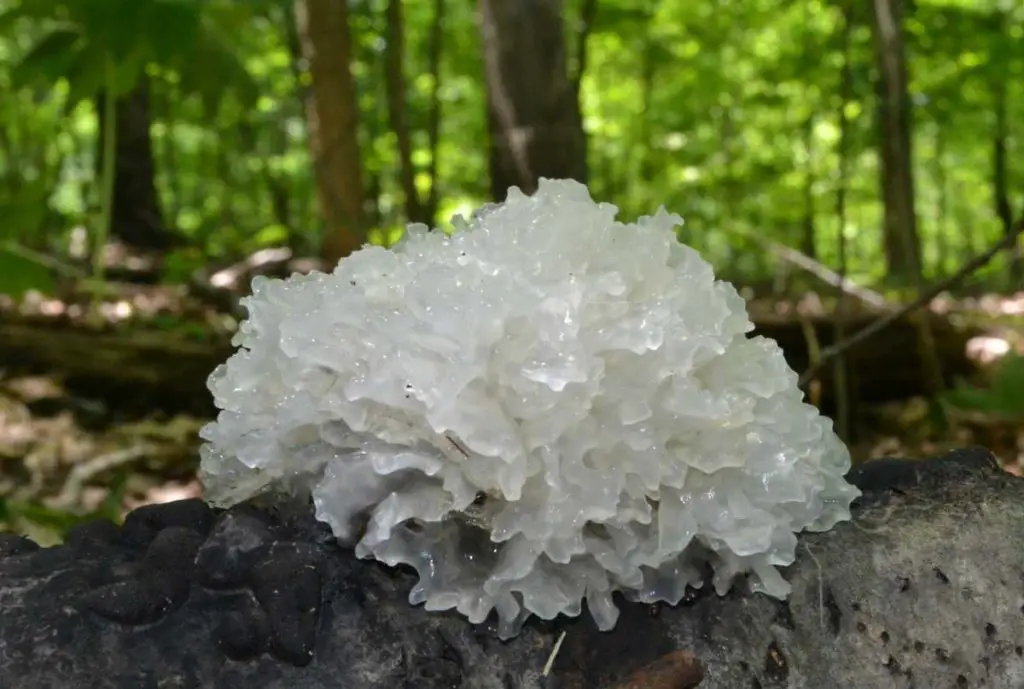
Tremella fuciformis is a unique species of fungus that is very popularly used in the culinary and medical traditions of China. Though its growth is widespread throughout humid, tropical regions of Asia, parts of North America, the Caribbean, Central America, and even Sub-Saharan Africa, Tremella fuciformis is colloquially known as the “snow fungus,” “snow ear,” or “white jelly mushroom” for its ethereal, gelatinous fruiting body. It has a light, leafy appearance and is usually stark white to off-white in color. Tremella fuciformis has been cultivated as an edible mushroom in China since the 19th century at least, and is traditionally used to add texture to primarily sweet dishes. It is also known for yielding numerous health benefits including cholesterol and blood sugar management, tumor inhibition, and neurological damage repair. It is also touted as a natural beauty enhancer, and is believed to revitalize and maintain elasticity in the skin.
Tremella Fuciformis Benefits
Neuroprotective/Anti-Aging: Tremella fuciformis has been described as an anti-aging fungus, but this is characteristic is not limited to skin revitalization. In a study published by the journal of Mycobiology, researchers prepared a hot water extract of T. fuciformis and evaluated its potency as a neuroprotective agent. With microscopic observation the researchers were able to perceive that T. fuciformis promoted neurite outgrowth (the process by which neurons grow in response to guidance stimuli) in PC12h cells. Given recent research into the cell lines involved with Alzheimer’s disease and other age-related neurodegenerative disorders, it is promising that this mechanism points to T. fuciformis as a potential precautionary agent against age-related cognitive degeneration. Related research has validated and expanded upon these points – for example, a study published by Behavioural Brain Research further examined neurite outgrowth and memory restoration in amnesiac rats supplemented with T. fuciformis. After assessing the rats’ performances in the Morris water maze test and performing a subsequent PET scan of the frontal lobe, researchers found that the rats’ performance in the maze test was significantly improved and that treatment with T. fuciformis significantly increased positive neurite outgrowth of PC12 cells.
Skin: Tremella fuciformis made an appearance in Allure magazine when a 2015 article titled “Can This Weird Fungus Give You Perfect Skin?” highlighted the mushroom as an ingredient in Olay’s new Active Botanicals cosmetic line. At this point, several international studies were emerging validating the use of T. fuciformis for skin health and cosmetic rejeuvenation. In 2016 a study published by the Korean Journal of Medicinal Crop Science, researchers investigated the whitening and anti-wrinkle efficacy of Tremella fuciformis in human skin cells. From analyzing water-based T. fuciformis extracts, researchers were able to recognize that the fungus induced repression of cellular melanogenesis and inhibited skin damage stimulated by UVB frequencies. A similar 2016 study published by the Journal of Functional Foods analyzed the efficacy of T. fuciformis antioxidant polysaccharides in ameliorating UV-induced skin damage. Results of the study indicated the following: 1) T. fuciformis (TP) reduced UV-induced collagen loss, 2) TP improved skin structure alterations caused by UV damage, and 3) TP’s protective actions were directly related to its antioxidant mechanisms.
Hypoglycemic and Anticholesterolemic: A study published by the Journal of Agricultural and Food Chemistry examined the impact of a T. fuciformis diet on adult Wistar rats fed a high cholesterol diet. After four weeks, results revealed that serum LDL-cholesterol, hepatic total cholesterol, and triglyceride levels were all significantly decreased in rats supplemented with T. fuciformis (both with and without the medication Nebacetin). Further, a study published by Applied Microbiology and Biotechnology explored the potential anti-diabetic effects of the exopolysaccharides produced by Tremella fuciformis and Phellinus baumii (a type of hoof-like medicinal mushroom) in obese mice. Results yielded higher food efficiency ratios, reduced blood triglyceride levels, and increased glucose disposal in both mushroom-treated groups in comparison to the control group. These and similar data indicate that T. fuciformis is likely effective as an anti-diabetic, hypoglycemic, and/or anticholesterolemic agent.
Agarikon (Laricifomes officinalis)
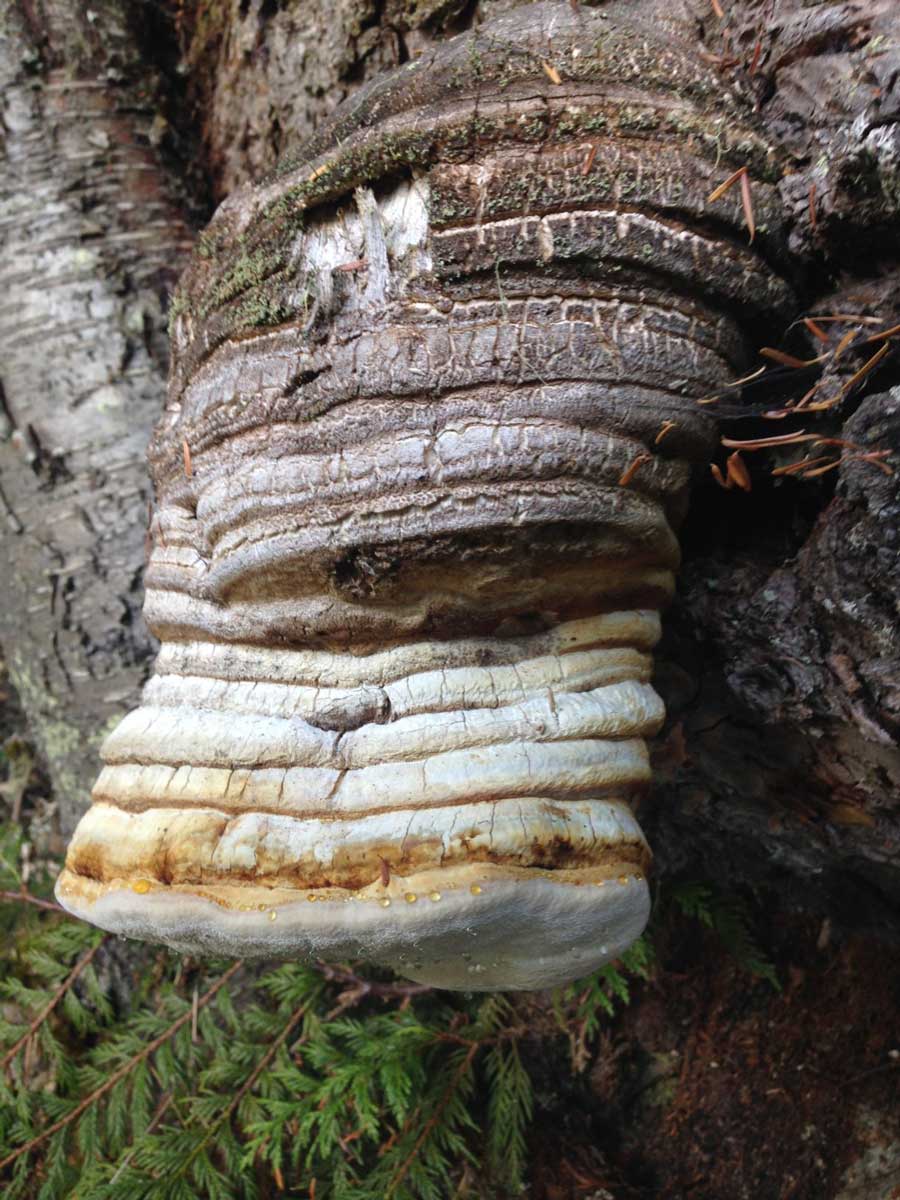
Agarikon, or Lariciformes officionalis, is a widespread wood-decay type fungus that is commonly found throughout Europe, Asia, and parts of North America and North Africa. It has a long history of medicinal use extending back to the Ancient Greek empire, but is not commonly used for culinary purposes given its bitter taste. Its use has also been attributed to the indigenous peoples of the Pacific Norwest regions of North America, including the Tlingit, Haida, and Tsimshian tribes. Agarikon typically emerges on conifer trees and causes brown rot in the trunks of its hosts. It is a hefty, almost hive-like bracket fungus that can weigh up to ten kilograms and live up to seventy years. This hardy fungus has demonstrated antiviral, antioxidant, antibacterial, and anti-inflammatory properties, and has also historically been used in the treatment of tuberculosis and smallpox.
Agarikon Benefits
Anti-Bacterial/Anti-Microbial: A Slovakian study published by the Journal of Microbiology, Biotechnology, and Food Science examined the antimicrobial acitvities of crude ethanolic extracts obtained from four different mushroom types: Cordyceps sinesis, Laricifomes officinalis, Oudemansiella mucida, and Coprinus comatus against two strains of harmful bacteria (Bacillus thuringiensis and Staphylococcus aureus). Using MIC methodology and the disc diffusion method, researchers were able to detect that Laricifomes officinalis showed a superior performance (particularly in the latter method) in terms of effective antimicrobial activity. An earlier study yielded similar results, when researchers at the University of California San Francisco found in an in vitro culture study that Laricifomes officinalis was particularly effective against various pox family viruses, as well as Influenza A, Influenza B, and Mycobacterium tuberculosis.
Anti-Inflammatory: In a study published by the Russian Journal of Bioorganic Chemistry, researchers explored the anti-inflammatory effects of ethanolic extracts isolated from 105 plants used in Russian traditional medicine, including Laricifomes officinalis. Results yielded that sixteen plant extracts, one of which was the agarikon mushroom, inhibited TNF-α production, a mechanism by which cell signaling proteins provoke systematic inflammation.
Anti-Tumor: Like many other medicinal mushrooms, Laricifomes officinalis has demonstrated potent anti-tumor and anti-cancer activities. In fact, agarikon has been shown to exhibit stronger cytotoxic effects in vitro on squamous cell carcinoma and fibrosarcoma than several of its fungal counterparts.
Phellinus linteus (Sang Hwang Mushroom, Mesima)
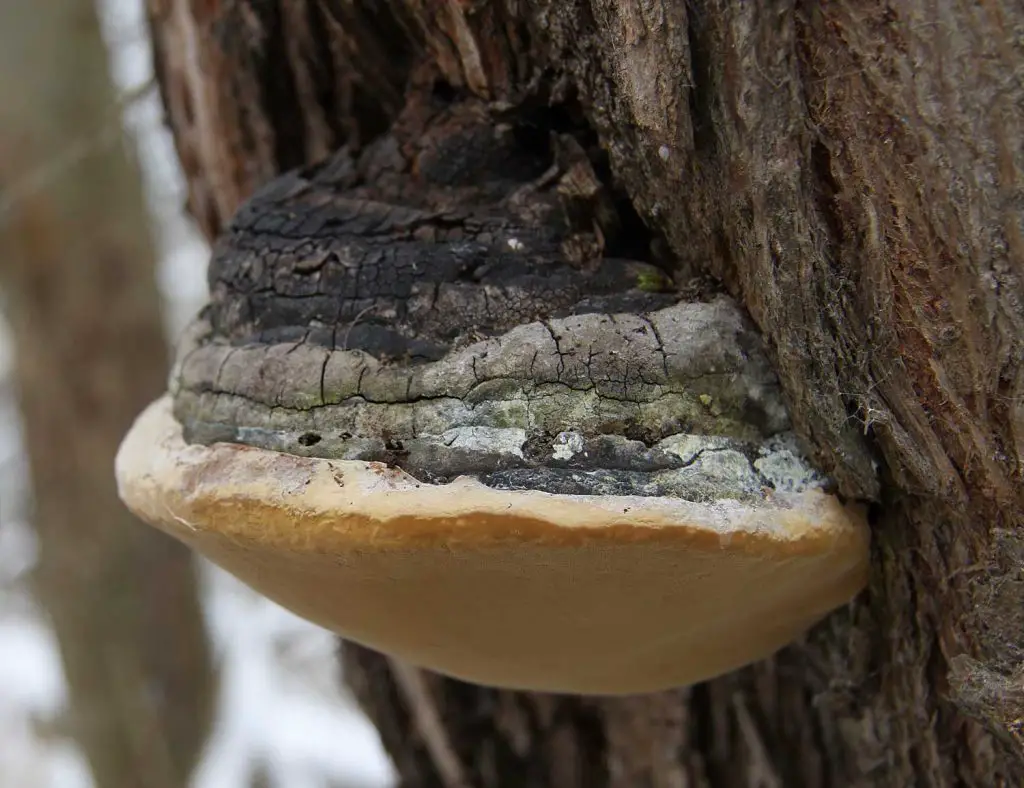
Phellinus linteus is a medicinal mushroom commonly used in East Asian countries, particularly Japan, Korea, and China, for a variety of illnesses and ailments. Other than its binomial nomenclature, the fungus is known by several names, including meshimakobu (Japanese), song gen (Chinese), sanghwang (Korean), and “meshima” or “black hoof mushroom” in English. The colloquial title stems from its hardened texture and curved, hoof-like shape. Meshima typically prefers to grow on mulberry trees, and the color of its stalk can vary from dark brown to stark black. Research has suggested that meshima has anti-tumor, pro-immunity, and anti-bacterial properties.
Phellinus linteus Benefits
Anti-Inflammatory: A notable study conducted at the Korea Research Institute of Bioscience and Biotehchnology in combination with the Bong Chon Natural Products Research Institute examined the effects of Phellinus linteus polysaccharides on cell-mediated immunity in 1996. Results indicated that immune function in laboratory mice was enhanced by the addition of a P. linteus mycelial culture into a culture of spleen lymphocytes. Further, researchers noted that P. linteus exhibited a wider range of immunostimulation activity than several other fungi previously observed by these institutes. Later research validated the efficacy of P. linteus’s immunological functions. A 2003 study published by the Journal of Ethnopharmacology examined the anti-angiogenic, antioxidant, and immunomodulatory effects of the meshima mushroom using the chick embryo chorioallantoic membrane (CAM) assay. Results yielded that an ethanol extract from the fruiting body of P. linteus inhibited lipid peroxidation in a dose-dependent manner and performed antioxidant and anti-angiogenic activities comparable to Vitamin C.
Anti-Cancer: A Korean study published by the journal of Immunopharmacology also observed the immunomodulatory effects of P. linteus polysaccharides, this time in relationship to cell-mediated tumor growth and metastasis. Results of the mouse model study were significant – researchers found that P. linteus alone significantly prolonged the survival rates of mice afflicted with B16F10 melanoma. They also concluded that a combination therapy of P. linteus and the medication adriamycin was particularly effective in inhibiting tumor growth. Further, P. linteus demonstrated effective anti-tumor activity without exhibiting toxicity to non-cancerous cells.
Antibacterial: In a study conducted between Sunchon National University in Seoul and Wonkwang University in Iksan, South Korea, researchers investigated the antibacterial effects of P. linteus via a methanol extract from its fruiting body. Results of the study indicated that the n-BuOH ethanol fraction of P. linteus was an effective antibacterial agent against all strains of methicillin-resistant Staphylococcus aureus. Further research has also indicated possible anti-parasitic activity of P. linteus in relationship to malaria.
Listen to the CEO of Four Sigma Mushrooms talk about medicinal mushrooms:
References:
https://www.ncbi.nlm.nih.gov/pmc/articles/PMC385249/
https://www.ncbi.nlm.nih.gov/pmc/articles/PMC5237458/
https://www.sciencedirect.com/science/article/pii/S027869150400002X
https://www.sciencedirect.com/science/article/pii/S0144861709002975
https://pubs.acs.org/doi/abs/10.1021/jf020648q
https://link.springer.com/article/10.1007%2Fs00253-007-0972-2
https://www.sciencedirect.com/science/article/pii/S037887410400457X
http://www.dl.begellhouse.com/journals/708ae68d64b17c52,266d4152107fca7a,3512deba5cc9e72b.html
http://journals.sagepub.com/doi/abs/10.1177/153537020222600808
https://link.springer.com/article/10.1134%2FS106816201407005X
https://www.sciencedirect.com/science/article/pii/0192056196000288
http://europepmc.org/abstract/med/10503166
https://www.sciencedirect.com/science/article/pii/S0162310998000630
https://www.ncbi.nlm.nih.gov/pmc/articles/PMC3942724/
https://onlinelibrary.wiley.com/doi/full/10.1111/j.1365-3083.2008.02156.x
https://www.ncbi.nlm.nih.gov/pmc/articles/PMC3168293/
http://www.dl.begellhouse.com/journals/708ae68d64b17c52,1b1b20957ef5c8f4,210d57c00e88b78c.html
https://onlinelibrary.wiley.com/doi/abs/10.1211/jpp.59.4.0013
http://www.academicjournals.org/journal/JMPR/article-abstract/903B95C21357
https://www.ncbi.nlm.nih.gov/pmc/articles/PMC5233449/
https://www.sciencedirect.com/science/article/pii/S0367326X04001455
https://www.ncbi.nlm.nih.gov/pubmed/20554107
https://www.sciencedirect.com/science/article/pii/S1876107013001405
https://www.liebertpub.com/doi/abs/10.1089/jmf.2008.0177
https://www.ncbi.nlm.nih.gov/pubmed/18844328
https://www.ncbi.nlm.nih.gov/pmc/articles/PMC3763079/
https://www.sciencedirect.com/science/article/pii/S0166432811008163
https://www.ncbi.nlm.nih.gov/pmc/articles/PMC3121254/
http://www.aces.edu/pubs/docs/U/UNP-0027/UNP-0027.pdfhttps://www.sciencedirect.com/science/article/pii/S0378874103001788
http://www.dl.begellhouse.com/journals/708ae68d64b17c52,0d0f121956dd501b,0a3878105512f782.html
http://journals.plos.org/plosone/article?id=10.1371/journal.pone.0057431
https://www.ncbi.nlm.nih.gov/pmc/articles/PMC3369477/
https://onlinelibrary.wiley.com/doi/abs/10.1002/jsfa.1928
https://www.sciencedirect.com/science/article/pii/S0944711305002461
https://www.banglajol.info/index.php/BJP/article/view/11727
https://www.jstage.jst.go.jp/article/jnsv1973/35/1/35_1_91/_article/-char/ja/
https://www.tandfonline.com/doi/abs/10.3109/13880209.2012.760103
https://www.ncbi.nlm.nih.gov/pubmed/18203281
https://www.sciencedirect.com/science/article/pii/S175646461500554X
http://journals.plos.org/plosone/article?id=10.1371/journal.pone.0059617
http://cochranelibrary-wiley.com/doi/10.1002/14651858.CD008353.pub2/full
https://www.sciencedirect.com/science/article/pii/S1567576909000253

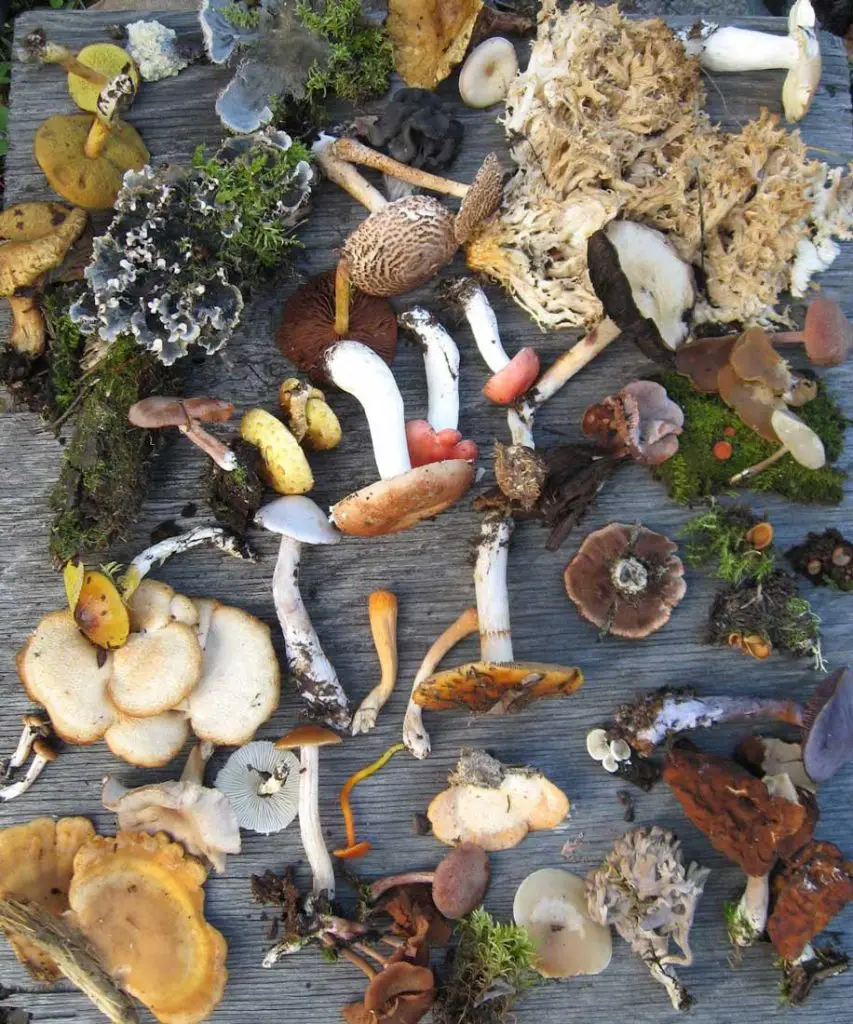

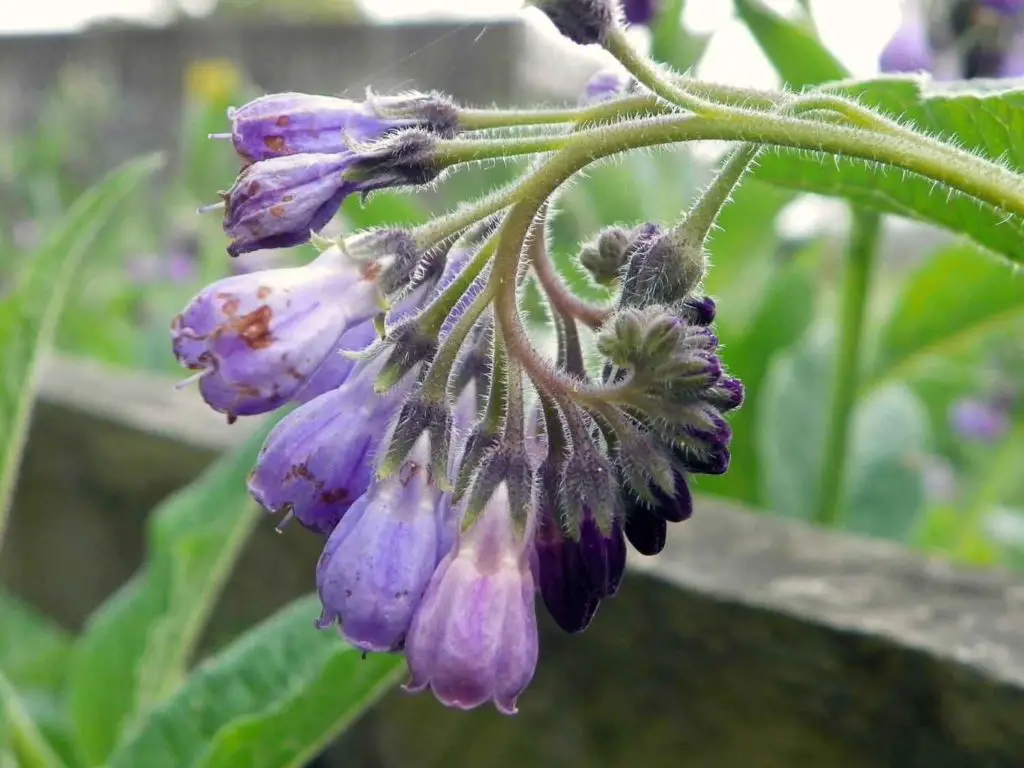
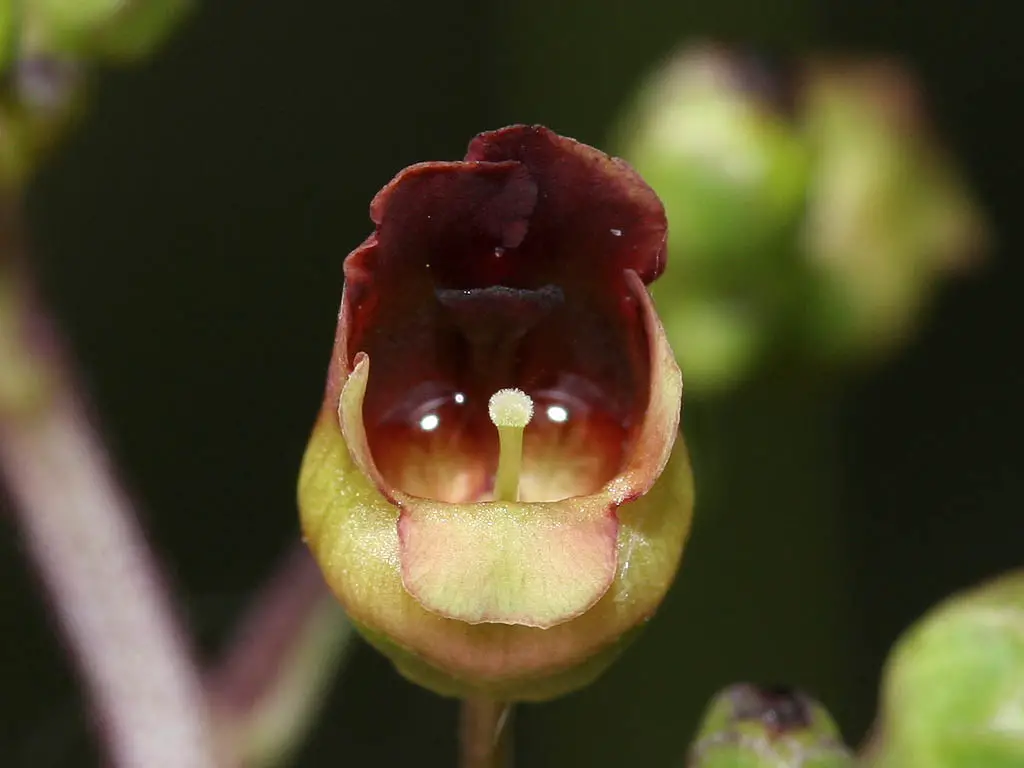
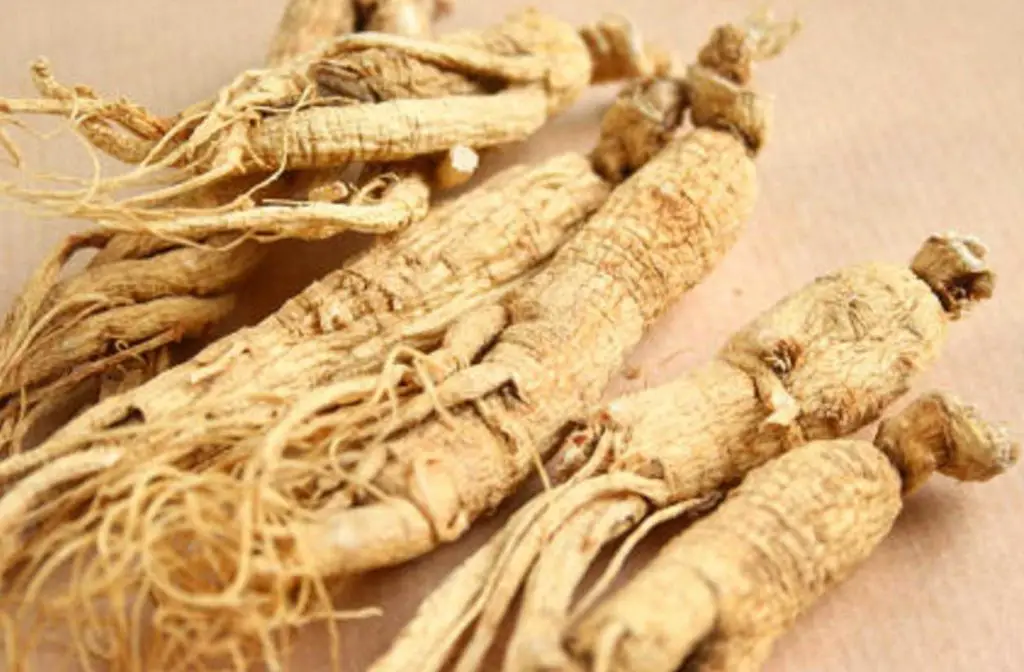
Many thanks for this well researched & documented posting as well as acknowledgement of & gratitude towards the author’s generosity in sharing the benefits of her studies.
Is there a mushroom or medicinal herb that will slow or stop the progression of dry macular degenertion?
Hi Phyllis! You can research more about Bilberry, Gingko Biloba, and EyeBright to see if those can help